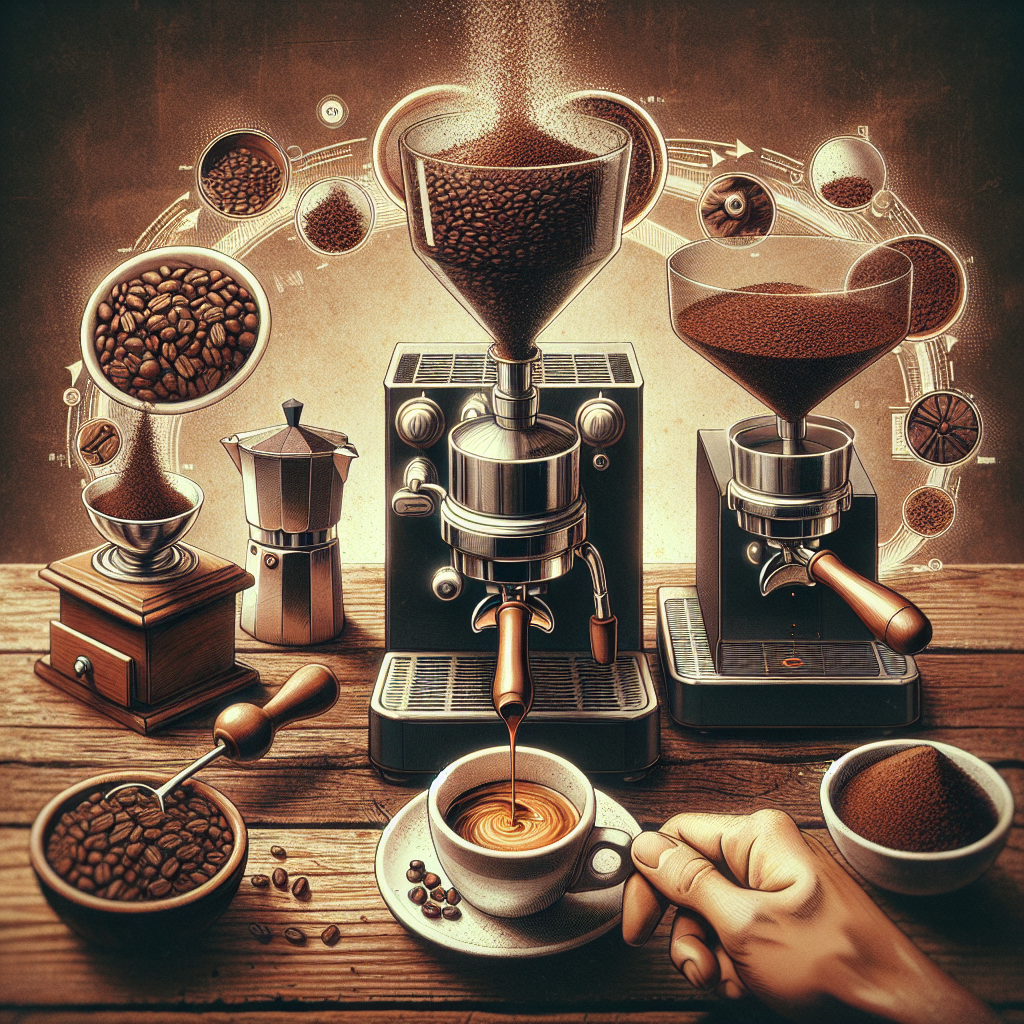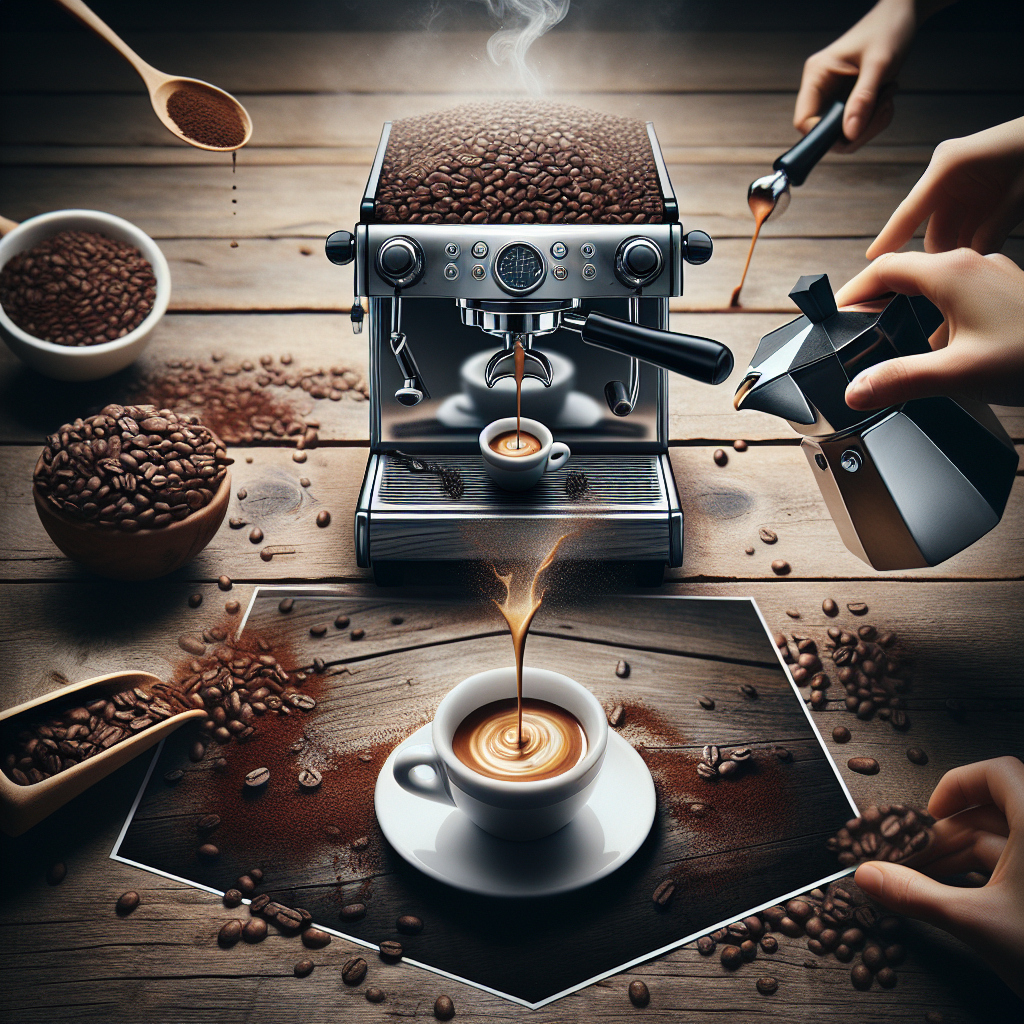Brewing the perfect espresso from beans can seem like an art form, but it doesn’t have to be intimidating. In this article, you will discover the common mistakes to avoid when brewing your own espresso. From choosing the wrong bean grind to neglecting proper tamping techniques, we’ll guide you through the pitfalls and give you practical tips to achieve that smooth and rich cup of espresso you crave. Get ready to elevate your home brewing skills and enjoy a delicious, cafe-quality experience every time.

Choosing the wrong beans
Using old or stale beans
When it comes to brewing espresso, one of the most crucial factors to consider is the freshness of your beans. Using old or stale beans can greatly affect the taste and quality of your espresso. As coffee beans age, they begin to lose their natural flavors and oils, resulting in a flat and dull cup of coffee. To avoid this mistake, always opt for freshly roasted beans and make sure to check the roast date on the packaging.
Using oily beans
While some people may find oily beans appealing due to their shiny appearance, they can cause a significant problem in espresso brewing. Oily beans tend to clog the grinder and the espresso machine, leading to uneven extraction and potentially damaging your equipment. Choose beans that have a moderate oil content to ensure a smooth brewing process and a balanced flavor profile.
Using flavored beans
Flavored beans may sound enticing, especially if you enjoy a dash of vanilla or hazelnut in your coffee. However, when it comes to brewing espresso, it is generally recommended to avoid flavored beans. The added artificial flavors can interfere with the extraction process and alter the taste of your espresso. Stick to plain, high-quality beans for the best results and experiment with adding flavors separately, such as through syrups or extracts, after brewing.
Incorrect grind size
Using too coarse grind
The grind size plays a crucial role in the extraction process. Using a grind that is too coarse can result in under-extracted espresso, lacking in flavor and strength. The water will pass through the coffee too quickly, preventing the extraction of the desirable compounds. To achieve a balanced and flavorful espresso, make sure to adjust your grinder to a finer setting to slow down the extraction process.
Using too fine grind
On the other hand, using a grind that is too fine can lead to over-extraction, resulting in a bitter and overbearing cup of coffee. The water will take longer to pass through the compacted grounds, extracting more undesirable compounds in the process. To avoid this mistake, adjust your grinder to a coarser setting and aim for a medium-fine grind that allows for proper extraction without overdoing it.
Inaccurate coffee-to-water ratio
Using too much coffee
Finding the perfect coffee-to-water ratio is key to brewing a balanced and flavorful espresso. Using too much coffee can lead to an overpowering taste, making the espresso bitter and unpleasant. It can also result in a slow extraction, causing the shot to become over-extracted and unpleasantly strong. Experiment with different ratios to find the ideal balance that suits your taste preferences.
Using too little coffee
Conversely, using too little coffee can result in a weak and underwhelming espresso. The shot may lack body and flavor, leaving you dissatisfied with the end result. It is essential to follow the recommended guidelines for the coffee-to-water ratio and adjust accordingly to achieve a well-rounded and satisfying cup of espresso.
Inconsistent tamping pressure
Insufficient tamping pressure
Tamping is an essential step in the espresso brewing process that helps to evenly distribute the coffee grounds and create a stable puck for the water to pass through. Insufficient tamping pressure can lead to channeling, where the water finds the path of least resistance and rushes through, resulting in an uneven extraction. Make sure to apply firm and consistent pressure when tamping to ensure a uniform and controlled water flow.
Excessive tamping pressure
While it is crucial to tamp with enough pressure, using excessive force can also lead to issues. Over tamping can cause the water to struggle to pass through the compacted puck, resulting in a slow extraction and potentially a bitter taste. Aim for a balanced and consistent tamping pressure to promote even extraction and prevent any unwanted flavors.
Uneven tamping pressure
Another common mistake is applying uneven tamping pressure, which can result in an uneven extraction and an imbalanced flavor profile. When tamping, make sure to distribute the pressure evenly across the coffee bed to create a level and compact puck. This will help to ensure an even extraction and a more consistent flavor in your espresso.

Improper water temperature
Water too hot
Water temperature plays a significant role in the extraction process, and if it is too hot, it can result in a burnt and bitter taste. Ideally, the water should be heated between 195°F and 205°F (90°C – 96°C) for optimal extraction. If your water is too hot, it can scorch the coffee grounds and extract undesirable compounds, compromising the flavor of your espresso. Use a thermometer or an espresso machine with temperature control to ensure the water is within the appropriate range.
Water too cold
On the other hand, if the water is too cold, it will not be able to extract the desired flavors and compounds effectively. The result may be a weak and under-extracted espresso. Ensure that your water is sufficiently heated to the recommended temperature range to achieve a flavorful and well-balanced cup of espresso.
Inadequate preheating
Neglecting to preheat the machine
Preheating your espresso machine before brewing is essential to maintain temperature stability and ensure proper extraction. Neglecting to preheat the machine can lead to a fluctuating brew temperature, which can cause inconsistent results and affect the overall taste of your espresso. Take the time to allow your machine to heat up adequately before starting the brewing process to achieve optimal results.
Not warming the portafilter and cups
In addition to preheating the machine, it is also essential to warm the portafilter and cups. Cold metal can quickly cool down the extracted espresso, resulting in a less enjoyable experience. Place the portafilter and cups on the machine’s warming plate or rinse them with hot water to ensure they are at an appropriate temperature before brewing.
Poor extraction time
Under-extraction
Under-extraction occurs when the coffee is not properly extracted, resulting in a weak and sour-tasting espresso. If the extraction time is too short, it indicates that the water did not have enough time to extract the desirable compounds from the coffee grounds. To remedy this, adjust your grind size to make it finer and extend the extraction time to achieve a more balanced and flavorful espresso.
Over-extraction
Conversely, over-extraction happens when the coffee is extracted for too long, leading to a bitter and unpleasant taste. If the extraction time is too long, it means that the water had too much contact with the coffee grounds, extracting more undesirable compounds. Adjust your grind size to be coarser and reduce the extraction time to avoid over-extraction and achieve a smoother espresso.
Neglecting proper machine maintenance
Not cleaning regularly
Proper machine maintenance is crucial to ensure the longevity and performance of your espresso machine. Neglecting to clean your machine regularly can lead to a buildup of coffee residue, oils, and mineral deposits, affecting the flavor of your espresso and potentially damaging your equipment. Follow the manufacturer’s instructions for cleaning and descaling your machine to keep it in optimal condition.
Using dirty equipment
Using dirty equipment, such as a dirty portafilter or group head, can have a significant impact on the quality of your espresso. Residue from previous extractions can contaminate the flavor of your current brew and result in a less enjoyable cup of espresso. Make it a habit to clean your equipment thoroughly after each use, ensuring a clean and fresh brewing environment.
Using the wrong brewing method
Incorrect brewing time
Different brewing methods require different brewing times to achieve the desired results. When brewing espresso, it is essential to adhere to the recommended brewing time. If the extraction time is too short or too long, it can greatly affect the taste and quality of your espresso. Follow the guidelines provided for your brewing method and experiment until you find the optimal brewing time for your preferences.
Inappropriate pressure
Espresso machines are designed to exert a specific pressure during the extraction process, typically between 9 and 10 bars. Using inappropriate pressure can result in an under or over-extracted espresso. Ensure that your machine is calibrated to the correct pressure and avoid manually tampering with it unless you have sufficient knowledge and experience.
Skipping the experimentation process
Not adjusting variables for taste
Brewing espresso is an art, and part of the joy lies in experimenting with different variables to discover your perfect cup. Skipping the experimentation process and not adjusting variables, such as grind size, brewing time, and coffee-to-water ratio, according to your taste preferences can lead to unsatisfactory results. Take the time to try different combinations and make notes to fine-tune your brewing technique and create a personalized espresso experience.
Not trying different techniques
In addition to adjusting variables, exploring different brewing techniques can also enhance your espresso experience. There are various methods, such as using a bottomless portafilter, employing the Ristretto technique, or experimenting with different milk frothing techniques for specialty drinks. Embrace the opportunity to try new techniques and expand your knowledge to create unique and delightful espresso creations.
In conclusion, brewing espresso from beans requires attention to detail and an understanding of various factors that can contribute to or detract from the quality of your cup. Avoiding the common mistakes discussed in this article, such as choosing the wrong beans, using an incorrect grind size, neglecting the importance of tamping pressure and water temperature, inadequate preheating, poor extraction time, improper machine maintenance, and using the wrong brewing method, will greatly improve your espresso brewing skills. Embrace the process, experiment with different variables and techniques, and enjoy the rewarding journey of brewing a satisfying cup of espresso.

